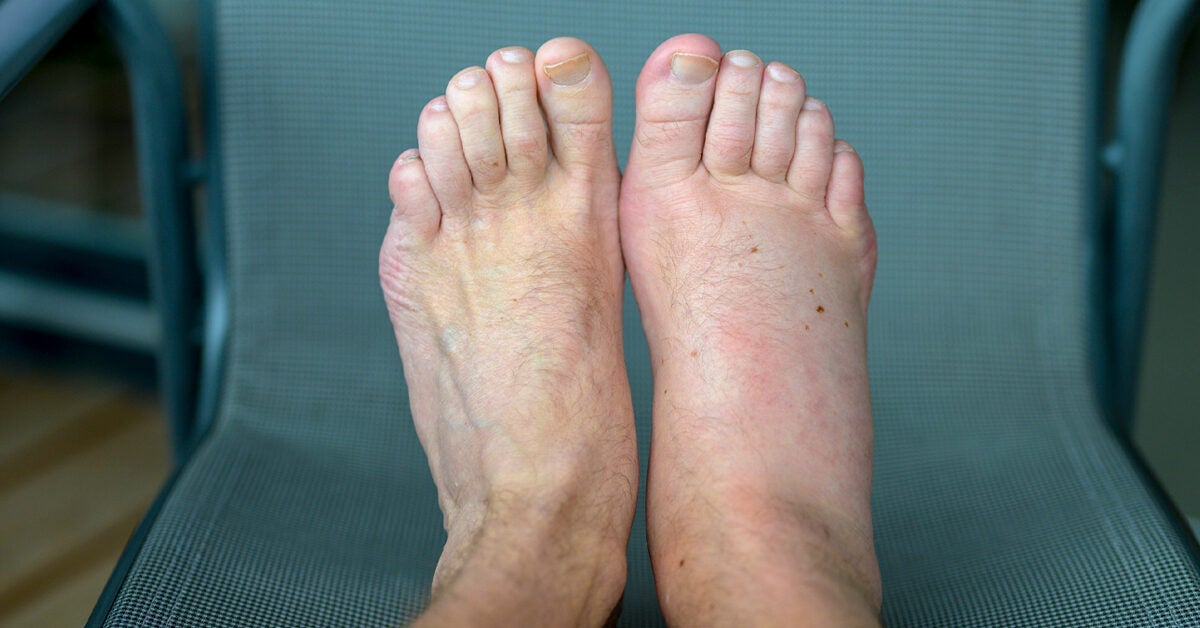
Hereditary angioedema (HAE) is a genetic condition that causes severe swelling in various parts of the body.
When symptoms occur, people often refer to this as an “attack.” HAE is a chronic condition, so these episodes can occur throughout a person’s life.
Below, learn about the triggers, frequency, causes, and treatments of HAE attacks. We also look into the symptoms involved in these attacks and describe the three main types of HAE.
HAE is a chronic, genetic condition that causes reoccurrent swelling of areas of skin and mucous membranes. This swelling may affect various areas throughout the body.
An HAE attack may be triggered by factors such as stress or trauma. Attacks may also occur for no discernable reason.
Episodes of HAE often begin early in a person’s life — often no later than the age of 13 — and some people experience their first symptoms before they turn 7. As a person ages, their symptoms may become more severe.
Treatments for HAE focus on preventing new attacks and decreasing the severity of symptoms if an attack occurs. The symptoms often disappear within 12–72 hours of their onset.
The frequency of HAE attacks varies from person to person.
In a 2020 survey of 445 respondents living with HAE, 78.7% reported experiencing an attack within the past month. The average number of attacks reported in a 6-month period was roughly 11.
The survey also notes that the frequency of attacks varies based on demographic data. For example, age, gender, race, and type of HAE influences the number of reported attacks.
Several factors can trigger HAE attacks in people with the condition.
In a small study that investigated these triggers, the researchers separated their participants into two groups.
In the first group, the most commonly reported trigger was mental stress, which accounted for about 21% of known triggers.
During the course of the 7-year study, these participants could only identify a trigger in about 30% of the more than 3,000 attacks that they recorded.
The study’s second group recorded attacks and triggers over 7 months. The participants reported 365 attacks, 67% of which occurred on days with identifiable potential triggers.
The second group’s most commonly reported triggers included:
- menstruation
- infections
- mental stress
- physical exertion
- changes in the weather
- fatigue
The U.S. Hereditary Angioedema Association have identified similar triggers. They report that the most common triggers include:
- stress
- anxiety
- illnesses such as the common cold or flu
- surgery
- minor injurires
They also note that people with HAE report symptoms occurring during or after activities such as:
- writing for long periods
- typing
- mowing the lawn
- shoveling
- hammering
- other physical activities
A person with HAE tends to experience varying degrees of symptoms throughout their life. The symptoms of a typical HAE attack include swelling in various areas, including the:
- skin on the hands, genitals, buttocks, feet, legs, and arms
- throat, including the tongue
- abdomen
- other organs
When the swelling affects the skin, it can cause changes in appearance, a loss of function, and pain. The symptoms typically go away within 12–72 hours.
When the swelling occurs in the abdomen, it can cause gastrointestinal symptoms, such as diarrhea, pain, and vomiting.
If the swelling occurs around the throat or tongue, it can quickly become a life threatening emergency. Anyone who has trouble breathing should receive urgent medical attention.
There are three main types of HAE. In a person with type 1, the body does not produce enough C1 inhibitor proteins. In a person with type 2, the body produces enough of these proteins, but they do not function properly.
Type 3 HAE is also known as estrogen-dependent HAE. The body produces enough C1 inhibitors and they function properly — the attacks are associated with an increase in estrogen from factors such as pregnancy and hormonal contraceptives.
Treatment focuses on preventing attacks and reducing the severity of the symptoms if attacks occur.
If HAE is affecting a person’s airways and breathing, emergency medical attention can be life saving.
Seven medications can treat HAE attacks directly or indirectly. They include:
- Berinert: This is an intravenous C1 inhibitor concentrate made from human plasma that treats HAE attacks in children and adults.
- Cinryze: Another intravenous medication, this is a C1 esterase inhibitor that prevents HAE attacks in children, teens, and adults.
- Haegarda: This is a self-administered, plasma-derived concentrate of C1 esterase inhibitor that treats symptoms of HAE.
- Ruconest: This is an intravenous, plasma-free recombinant C1 inhibitor concentrate that treats HAE attacks in teens and adults.
- Ecallantide (Kalbitor): This is an injection of a kallikrein inhibitor that treats acute HAE attacks in people who are at least 12 years of age.
- Icatibant (Firazyr): This is an injected B2 bradykinin receptor antagonist that treats acute HAE attacks in people who are at least 18 years of age.
- Lanadelumab-flyo (Takhzyro): This plasma-based kallikrein inhibitor injection prevents HAE attacks in people who are at least 12 years of age.
A child of a parent with HAE has an increased risk of developing the condition. Speak with a child’s doctor about any risk of HAE. It is important to work with the doctor to develop the most effective treatment plan.
HAE attacks cause severe swelling of various parts of the body. A person may experience gastrointestinal symptoms if the swelling affects the abdomen. If it affects the throat, the person may need emergency care.
Work with a doctor to identify the medications that most effectively prevent HAE attacks and reduce the severity of any symptoms that arise.
"occur" - Google News
December 03, 2020 at 10:39PM
https://ift.tt/2Vz5s04
HAE attacks: Frequency, triggers, and more - Medical News Today
"occur" - Google News
https://ift.tt/2UoDqVw
https://ift.tt/2Wq6qvt
Bagikan Berita Ini















0 Response to "HAE attacks: Frequency, triggers, and more - Medical News Today"
Post a Comment